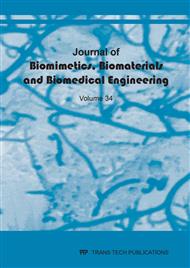[1]
Y. Oyelese, W. E. Scorza, R. Mastrolia, J. C. Smulian, Postpartum Haemorrhage, Obstetrics and Gynaecology Clinics of North America. 34 (2007) 421–441.
DOI: 10.1016/j.ogc.2007.06.007
Google Scholar
[2]
C. W. Su, Postpartum Haemorrhage, Primary Care: Clinics in Office Practice. 39 (2012) 167–187.
DOI: 10.1016/j.pop.2011.11.009
Google Scholar
[3]
G. Kv\a ale, E.O. Bjørg, G.H. Sven, U. Magnar, B. Per, Maternal Deaths in Developing Countries: A Preventable Tragedy, Norsk Epidemiology. 15 (2005) 141-149.
Google Scholar
[4]
J. W. Snelgrove, Postpartum Haemorrhage in the Developing World a Review of Clinical Management Strategies, McGill Journal of Medicine: MJM, 12 (2009) 61-66.
DOI: 10.26443/mjm.v12i2.279
Google Scholar
[5]
K. Tindell, R. Garfinkel, E. Abu-Haydar, R. Ahn, T. F. Burke, K. Conn, M. Eckardt, Uterine Balloon Tamponade for the Treatment of Postpartum Haemorrhage in Resource-Poor Settings: A Systematic Review: UBT for Treatment of PPH-a Systematic Review, BJOG: An International Journal of Obstetrics & Gynaecology. 120 (2013).
DOI: 10.1111/j.1471-0528.2012.03454.x
Google Scholar
[6]
T. T. A. Ujjiga, J. O. Omolo, M. OAketch, E. B. Ochi, Risk factors associated with postpartum haemorrhage at Juba Teaching Hospital, South Sudan, 2011, South Sudan Medical Journal. 7 (2014) 52–56.
Google Scholar
[7]
M. Walfish, A. Neuman, D. Wlody, Maternal Haemorrhage, British Journal of Anaesthesia. 103 (2009) i47–56.
DOI: 10.1093/bja/aep303
Google Scholar
[8]
Program for Appropriate Technology in Health (PATH), Uterine Balloon Tamponade. (2012) available at: www. path. org. (Accessed 2 August 2014).
Google Scholar
[9]
B. D. Nelson, H. Stoklosa, R. Ahn, M. J. Eckardt, E. K. Walton, T. F. Burke, Use of Uterine Balloon Tamponade for Control of Postpartum Haemorrhage by Community-Based Health Providers in South Sudan, International Journal of Gynaecology & Obstetrics. 122 (2013).
DOI: 10.1016/j.ijgo.2013.02.017
Google Scholar
[10]
C. Georgiou, Balloon tamponade in the management of postpartum haemorrhage: a review, BJOG: An International Journal of Obstetrics & Gynaecology. 116 (2009) 748–757.
DOI: 10.1111/j.1471-0528.2009.02113.x
Google Scholar
[11]
S. Akhter, M.R. Begum, J. Kabir, Condom Hydrostatic Tamponade for Massive Postpartum Haemorrhage, International Journal of Gynaecology & Obstetrics, 90 (2005) 134–35.
DOI: 10.1016/j.ijgo.2005.03.018
Google Scholar
[12]
K. H. Sienko, E. Effah Kaufmann, M. E. Musaazi, A. S. Sarvestani, S. Obed, Obstetrics-Based Clinical Immersion of a Multinational Team of Biomedical Engineering Students in Ghana, International Journal of Gynaecology & Obstetrics. 127 (2014).
DOI: 10.1016/j.ijgo.2014.06.012
Google Scholar
[13]
Y. Haik, T. Shahin, Engineering design process. Second ed., CT: Cengage Learning, Stamford, (2011).
Google Scholar
[14]
S. Bhat, A. Kumar, Biomaterials and Bioengineering Tomorrow's Healthcare, Biomatter. 3 (2013) e24717.
Google Scholar
[15]
L. W. McKeen, Plastics Used in Medical Devices: Polymer Applications in Medicine and Medical Devices, Elsevier Inc., Oxford. (2014) 21–53.
DOI: 10.1016/b978-0-323-22805-3.00003-7
Google Scholar
[16]
A. M. Rathore, S. Gupta, U. Manaktala, S. Gupta, C. Dubey, M. Khan, Uterine Tamponade Using Condom Catheter Balloon in the Management of Non-Traumatic Postpartum Haemorrhage: Condom Balloon Tamponade in PPH, Journal of Obstetrics and Gynaecology Research. 38 (2012).
DOI: 10.1111/j.1447-0756.2011.01843.x
Google Scholar


